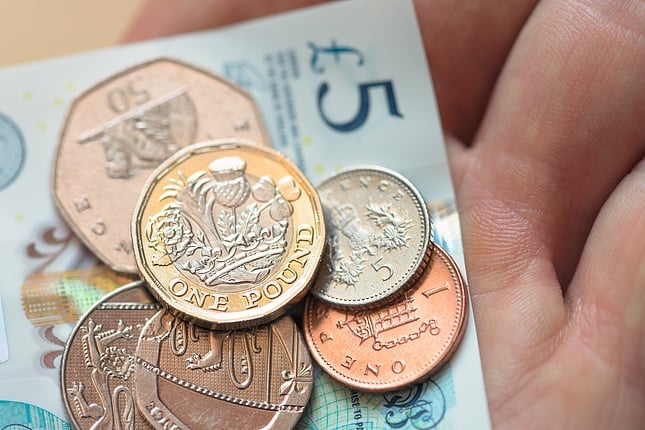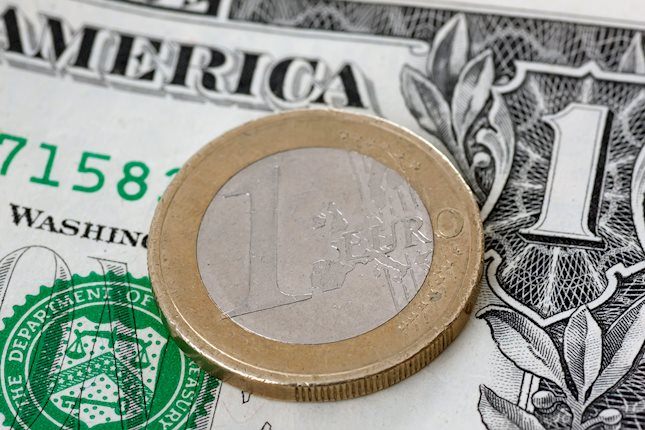- Gold price regains positive traction and stalls its corrective slide from a multi-week peak.
- Dovish Fed expectations and geopolitical risks continue to lend support to the XAU/USD.
- Rising US bond yields underpin the US Dollar and might cap any further appreciating move.
Gold price (XAU/USD) attracts fresh buyers on the first trading day of 2024 and maintains its bid tone through the early part of the European session. The precious metal currently trades around the $2,075 region, up over 0.50% for the day, and remains well supported by rising bets that the Federal Reserve (Fed) will soon start cutting interest rates, as early as March. This, along with geopolitical risks and concerns about fragile economic recovery in China, lends some support to the non-yielding yellow metal.
That said, a modest US Dollar (USD) strength, bolstered by a further rise in the US Treasury bond yields, keeps the Gold price below a multi-week high touched last Thursday. Traders also seem reluctant to place aggressive bets and prefer to wait for the release of the FOMC meeting minutes on Wednesday. This week's busy US economic docket also features important macro data, including the Nonfarm-Payrolls (NFP) report on Friday, which will influence the USD and provide a fresh impetus to the metal.
Daily Digest Market Movers: Gold price sticks to gains despite rising US bond yields, modest USD strength
- Gold price registered a 13% annual rise in 2023, marking its best year since 2020, and seems poised to prolong its recent well-established appreciating trend.
- Hopes that the Federal Reserve will achieve a soft landing for the economy in 2024 and ease its policy as early as March lend support to the yellow metal.
- The CME's FedWatch tool indicates a more than 85% chance that the Fed will deliver a rate cut in March and a cumulative of 150 basis points (bps) rate cut by the year-end.
- The safe-haven precious metal draws additional support from geopolitical risks stemming from the war in Ukraine and in the Middle East, and China's economic woes.
- US forces struck back against the Iran-backed Houthi group in the Red Sea in response to a series of strikes on several military and commercial vessels in the region.
- The official Chinese PMI released over the weekend indicated a further deterioration in manufacturing activity and little signs of recovery at the end of 2023.
- A private-sector survey, meanwhile, showed on Tuesday that China's factory activity expanded at a quicker pace in December but business confidence for 2024 remained subdued.
- The US Dollar builds on its recovery from a five-month low amid a further rise in the US Treasury bond yields and might cap further gains for the XAU/USD.
- The yield on the benchmark 10-year US government bond recovered further from its lowest level since July touched last week and underpins the buck.
- Traders now look to the release of FOMC minutes on Wednesday and important US macro releases, including the NFP report, for some meaningful impetus.
- This week's busy economic docket also features the ISM Manufacturing PMI and JOLTS Job Openings on Wednesday, followed by the ADP report on Thursday.
Technical Analysis: Gold price needs to break through $2,077-2,078 hurdle for bulls to seize control
From a technical perspective, the all-time high closing, around the $2,077-2,078 region printed last Wednesday, now seems to act as an immediate barrier ahead of the $2,088 zone, or the multi-week high. Some follow-through buying should allow the Gold price to reclaim the $2,100 round-figure mark. The subsequent move up has the potential to lift the XAU/USD further towards retesting the record peak, around the $2,144 area set in early December.
On the flip side, the $2,060-2,058 region now seems to protect the immediate downside ahead of the $2,048 horizontal zone and the $2,040 area. Failure to defend the said support levels might turn the Gold price vulnerable to accelerate the slide towards the $2,020 intermediate support en route to the 50-day Simple Moving Average (SMA), currently near the $2,006 region, and the $2,000 psychological mark.
US Dollar price today
The table below shows the percentage change of US Dollar (USD) against listed major currencies today. US Dollar was the strongest against the Swiss Franc.
| USD | EUR | GBP | CAD | AUD | JPY | NZD | CHF | |
| USD | 0.14% | 0.09% | 0.09% | -0.10% | 0.28% | 0.18% | 0.32% | |
| EUR | -0.14% | -0.04% | -0.04% | -0.22% | 0.15% | 0.05% | 0.18% | |
| GBP | -0.09% | 0.05% | 0.00% | -0.21% | 0.20% | 0.08% | 0.19% | |
| CAD | -0.09% | 0.05% | 0.00% | -0.17% | 0.20% | 0.10% | 0.22% | |
| AUD | 0.10% | 0.22% | 0.17% | 0.17% | 0.37% | 0.26% | 0.39% | |
| JPY | -0.30% | -0.14% | -0.20% | -0.18% | -0.36% | -0.10% | 0.02% | |
| NZD | -0.19% | -0.05% | -0.10% | -0.10% | -0.29% | 0.12% | 0.06% | |
| CHF | -0.32% | -0.15% | -0.20% | -0.20% | -0.43% | -0.01% | -0.11% |
The heat map shows percentage changes of major currencies against each other. The base currency is picked from the left column, while the quote currency is picked from the top row. For example, if you pick the Euro from the left column and move along the horizontal line to the Japanese Yen, the percentage change displayed in the box will represent EUR (base)/JPY (quote).
Interest rates FAQs
What are interest rates?
Interest rates are charged by financial institutions on loans to borrowers and are paid as interest to savers and depositors. They are influenced by base lending rates, which are set by central banks in response to changes in the economy. Central banks normally have a mandate to ensure price stability, which in most cases means targeting a core inflation rate of around 2%.
If inflation falls below target the central bank may cut base lending rates, with a view to stimulating lending and boosting the economy. If inflation rises substantially above 2% it normally results in the central bank raising base lending rates in an attempt to lower inflation.
How do interest rates impact currencies?
Higher interest rates generally help strengthen a country’s currency as they make it a more attractive place for global investors to park their money.
How do interest rates influence the price of Gold?
Higher interest rates overall weigh on the price of Gold because they increase the opportunity cost of holding Gold instead of investing in an interest-bearing asset or placing cash in the bank.
If interest rates are high that usually pushes up the price of the US Dollar (USD), and since Gold is priced in Dollars, this has the effect of lowering the price of Gold.
What is the Fed Funds rate?
The Fed funds rate is the overnight rate at which US banks lend to each other. It is the oft-quoted headline rate set by the Federal Reserve at its FOMC meetings. It is set as a range, for example 4.75%-5.00%, though the upper limit (in that case 5.00%) is the quoted figure.
Market expectations for future Fed funds rate are tracked by the CME FedWatch tool, which shapes how many financial markets behave in anticipation of future Federal Reserve monetary policy decisions.
Information on these pages contains forward-looking statements that involve risks and uncertainties. Markets and instruments profiled on this page are for informational purposes only and should not in any way come across as a recommendation to buy or sell in these assets. You should do your own thorough research before making any investment decisions. FXStreet does not in any way guarantee that this information is free from mistakes, errors, or material misstatements. It also does not guarantee that this information is of a timely nature. Investing in Open Markets involves a great deal of risk, including the loss of all or a portion of your investment, as well as emotional distress. All risks, losses and costs associated with investing, including total loss of principal, are your responsibility. The views and opinions expressed in this article are those of the authors and do not necessarily reflect the official policy or position of FXStreet nor its advertisers. The author will not be held responsible for information that is found at the end of links posted on this page.
If not otherwise explicitly mentioned in the body of the article, at the time of writing, the author has no position in any stock mentioned in this article and no business relationship with any company mentioned. The author has not received compensation for writing this article, other than from FXStreet.
FXStreet and the author do not provide personalized recommendations. The author makes no representations as to the accuracy, completeness, or suitability of this information. FXStreet and the author will not be liable for any errors, omissions or any losses, injuries or damages arising from this information and its display or use. Errors and omissions excepted.
The author and FXStreet are not registered investment advisors and nothing in this article is intended to be investment advice.
Recommended content
Editors’ Picks

GBP/USD clings to recovery gains above 1.2650 after UK data
GBP/USD clings to recovery gains above 1.2650 in European trading on Friday. The mixed UK GDP and industrial data fail to deter Pound Sterling buyers as the US Dollar takes a breather ahead of Retail Sales and Fedspeak.

EUR/USD rises to near 1.0550 after rebounding from yearly lows
EUR/USD rebounds to near 1.0550 in the European session on Friday, snapping its five-day losing streak. The renewed upside is mainly lined to a oause in the US Dollar rally, as traders look to the topt-tier US Retail Sales data for a fresh boost. ECB- and Fedspeak also eyed.

Gold defends key $2,545 support; what’s next?
Gold price is looking to build on the previous rebound early Friday in search of a fresh impetus amid persistent US Dollar buying and mixed activity data from China.

Bitcoin to 100k or pullback to 78k?
Bitcoin and Ethereum showed a modest recovery on Friday following Thursday's downturn, yet momentum indicators suggest continuing the decline as signs of bull exhaustion emerge. Ripple is approaching a key resistance level, with a potential rejection likely leading to a decline ahead.

Trump vs CPI
US CPI for October was exactly in line with expectations. The headline rate of CPI rose to 2.6% YoY from 2.4% YoY in September. The core rate remained steady at 3.3%. The detail of the report shows that the shelter index rose by 0.4% on the month, which accounted for 50% of the increase in all items on a monthly basis.

Best Forex Brokers with Low Spreads
VERIFIED Low spreads are crucial for reducing trading costs. Explore top Forex brokers offering competitive spreads and high leverage. Compare options for EUR/USD, GBP/USD, USD/JPY, and Gold.